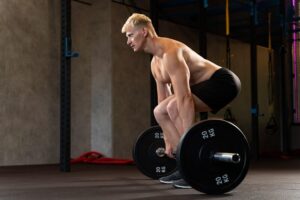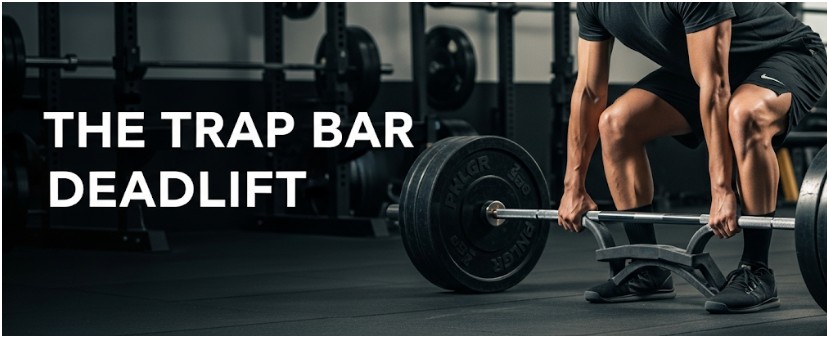
If you’ve ever tried the trap bar deadlift, you know it’s one of those exercises that makes you feel like a beast afterward. It hits multiple muscle groups at once and feels way more natural on your body than a regular barbell deadlift.
Personally, I remember the first time I used the trap bar. I was recovering from an injury, and I was looking for a way to build strength without straining my lower back. The trap bar deadlift felt like a game changer. It allowed me to train harder, safer, and more efficiently.
But the big question is—what muscles does the trap bar deadlift actually work? Let’s break it down, so you can make the most of this powerhouse movement in your fitness routine.
What Trap Bar Deadlift Muscles Worked?
The trap bar deadlift is a full-body exercise that targets both your anterior (front) and posterior (back) muscle chains.
When you perform the movement correctly, you engage your quadriceps, hamstrings, glutes, lower back, traps, forearms, and core. Here’s a breakdown:
1. Quadriceps
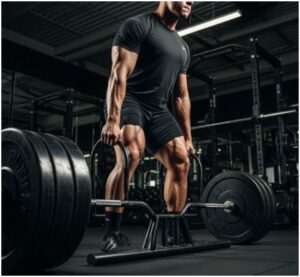
The most noticeable difference between a traditional deadlift and a trap bar deadlift is the more upright torso position. This position places more emphasis on the quadriceps, which are responsible for knee extension. This is especially evident when you drive through your heels to lift the weight.
2. Hamstrings
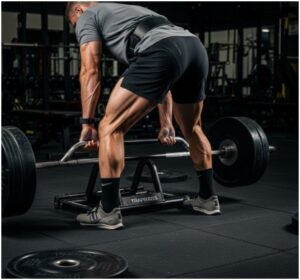
Even though the trap bar puts more emphasis on the quads, your hamstrings are still doing a lot of work. As a hinge movement, your hamstrings are engaged throughout, helping with hip extension and knee flexion.
3. Glutes
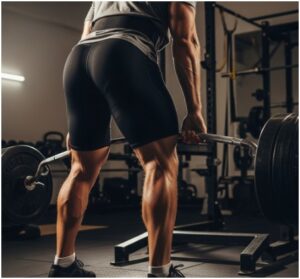
Your glutes are the prime movers in any deadlift, and the trap bar is no exception. These muscles contribute significantly to hip extension, giving you the power to finish the lift.
4. Lower Back (Erector Spinae)
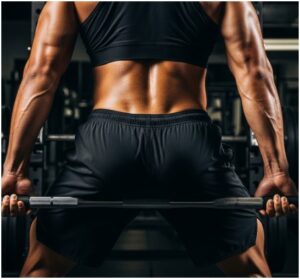
The erector spinae muscles in your lower back are key for stabilizing your spine during the lift. The trap bar’s design puts less strain on the lower back compared to the straight bar deadlift, thanks to its more upright position.
5. Core

A strong, stable core is vital when lifting heavy. The trap bar deadlift activates your deep abdominal muscles and obliques to help maintain stability throughout the movement.
6. Trapezius
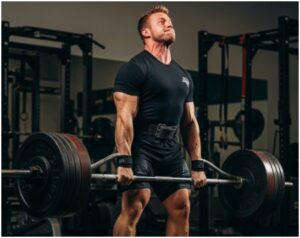
The traps play an important role in stabilizing your shoulder girdle and maintaining posture, particularly in the upper back.
7. Forearms and Grip
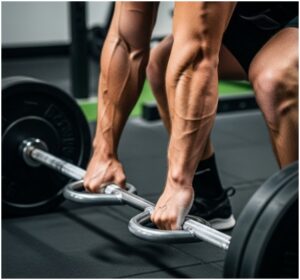
The neutral grip on the trap bar also works your forearm muscles. Holding the bar tight while lifting helps improve your grip strength, a benefit that transfers to other lifts and daily tasks.
What Are the 5 Benefits of the Trap Bar Deadlift?
The trap bar deadlift isn’t just about working muscles—it offers a host of benefits that can level up your training routine. Here are the top five:
1. Reduced Stress on Your Lower Back
One of the biggest advantages of using the trap bar is its ergonomic design. The neutral grip and the more upright torso position reduce the risk of overloading the lower back. This makes it an ideal option for anyone with a history of back issues or those looking to reduce strain on their spine.
2. Better Posture and Spinal Alignment
Because the trap bar deadlift encourages a more neutral spine position, it helps with overall posture and spinal alignment. This can be especially beneficial if you spend a lot of time sitting or slouching.
3. Improved Leg Strength
Unlike traditional deadlifts, which tend to focus more on the posterior chain (glutes, hamstrings, and lower back), the trap bar deadlift places more emphasis on the quadriceps. This helps develop stronger legs, which are essential for explosive movements and athletic performance.
4. More Comfortable Grip
The neutral hand position on the trap bar makes it easier to hold, especially for people with wrist or shoulder discomfort. This makes it an accessible movement for everyone, including those with weaker grip strength.
5. Great for Beginners and Advanced Lifters
Whether you’re just starting out or you’re a seasoned lifter, the trap bar deadlift can be adapted to fit your needs. For beginners, it’s a great way to learn proper form and build strength safely. For advanced lifters, it’s a powerful tool for adding variety to your routine and increasing intensity.
Are Trap Bar Deadlifts as Effective?
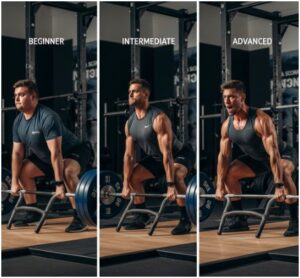
Trap bar deadlifts have gained a lot of popularity in recent years, but are they really as effective as traditional deadlifts? The answer depends on your fitness goals and how you incorporate them into your program.
For Building Overall Strength
If you’re looking to build strength and power, the trap bar deadlift is incredibly effective. It engages the muscles in your legs, back, and core, allowing you to lift heavy weights and improve your performance across multiple lifts.
For Leg Development
If your goal is to increase leg size and strength, the trap bar deadlift is a fantastic option. Its design allows for a more quad-dominant movement compared to the conventional barbell deadlift, making it excellent for targeting the front of the legs.
For Reducing Back Stress
The trap bar deadlift is a safer alternative if you have a history of lower back pain. It reduces the forward lean that can put excessive strain on your spine, while still working your lower body and back muscles effectively.
In summary, trap bar deadlifts can be just as effective as traditional deadlifts, especially when you take into account the reduced injury risk and the focus on leg strength.
Are Trap Bar Deadlifts a Back or Leg Exercise?
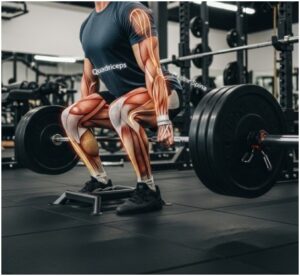
A common question that comes up when discussing the trap bar deadlift is whether it’s more of a back or leg exercise. The truth is, it’s both!
More Leg-Focused
The trap bar deadlift emphasizes the quadriceps more than the traditional barbell deadlift due to the more upright posture. Your glutes and hamstrings are still heavily involved, but the quads are activated to a greater degree, making this exercise more leg-centric.
Back and Core Strengthening
That said, the trap bar deadlift still hits the posterior chain—your hamstrings, glutes, and lower back—just like a conventional deadlift. The key difference is that the less pronounced forward lean places less strain on the lower back, making it a safer option for strengthening these areas.
Full-Body Movement
Ultimately, the trap bar deadlift is a full-body exercise that targets multiple muscle groups, including both your legs and back. So, whether you’re aiming for a stronger squat, deadlift, or just overall athletic performance, this lift will get you there.
FAQs
1. Is the Trap Bar Deadlift Good for Beginners?
Absolutely! The trap bar deadlift is beginner-friendly because its design promotes better posture and less strain on the lower back. The neutral grip is also easier to manage for those who may struggle with traditional deadlifts.
2. How Often Should I Do Trap Bar Deadlifts?
It depends on your training program. For most people, incorporating trap bar deadlifts 1–2 times a week is effective for building strength. Make sure to allow for adequate recovery between sessions.
3. Can Trap Bar Deadlifts Help with Weight Loss?
Yes! Because the trap bar deadlift engages multiple muscle groups and allows for heavy lifting, it can help build muscle and increase metabolism, which are key for fat loss. Incorporating it into a balanced fitness routine can certainly aid in weight loss.
4. Are Trap Bar Deadlifts Safer Than Regular Deadlifts?
For many people, the trap bar deadlift is safer than the traditional barbell deadlift, particularly for those with back issues. The more upright position and neutral grip reduce strain on the lower back, making it a safer option for strength training.
The Bottom Line: Make Trap Bar Deadlifts Part of Your Routine
Now you know what trap bar deadlifts muscles worked on your body. If you’re not already incorporating the trap bar deadlift into your fitness regimen, it’s time to start.
This exercise targets multiple muscle groups, builds strength, and reduces the risk of injury, making it a must-have for anyone serious about fitness.
Remember, as with any exercise, form is key. Start light, master the technique, and progressively add weight as your strength improves. And most importantly, enjoy the process of getting stronger every day!


